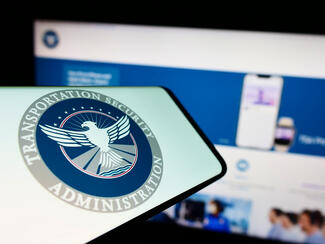The Transportation Security Administration (TSA) is testing a new self-service screening system at Harry Reid International Airport in Las Vegas, specifically within its Innovation Checkpoint area. This innovative approach is currently being trialed with TSA PreCheck passengers to evaluate its effectiveness and potential for broader deployment.
Enhancing Passenger Experience Through Innovation
TSA Administrator David Pekoske highlighted the agency's commitment to enhancing the passenger experience without compromising security. The self-service prototype allows travelers to navigate the screening process independently, at their own pace. The trial in Las Vegas will provide crucial data and insights, helping the TSA explore how elements of the prototype could be integrated into security checkpoints at other airports.
How the Self-Service System Works
In this new system, passengers place their items on a screening belt, similar to traditional TSA checkpoints. However, the process diverges with the absence of TSA officers to guide and assist. Instead, video monitors display instructions, and travelers with questions can use a video interface to communicate with an agent.
Upon placing their belongings for screening, passengers proceed to an automated body scanner that offers step-by-step guidance. If the scanner detects any objects on a person, it prompts them to return to their bags to remove these items before undergoing a second screening.
Remote TSA workers focus on monitoring the screening images for prohibited items, potentially increasing efficiency and security focus.
Goals and Expectations
The self-service system aims to directly inform passengers of any alarms triggered by their person, encouraging self-resolution and reducing the need for pat-downs or secondary screenings. Throughout the Las Vegas trial, the TSA will gather feedback and performance data, considering factors like system design, cybersecurity, and user interaction. This information will guide future design and development decisions.
Collaborative Effort
This technology was developed in collaboration with the Department of Homeland Security's Science and Technology Directorate, marking a significant step towards modernizing and streamlining airport security processes.
As the trial progresses, the TSA seeks to understand the system's feasibility and how it can enhance both passenger experience and security efficiency in the future.


